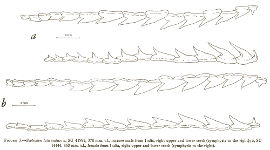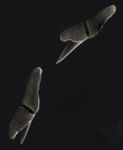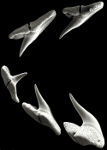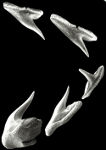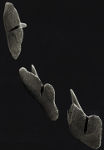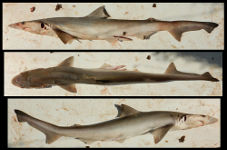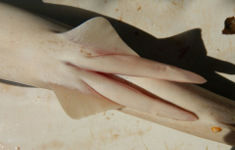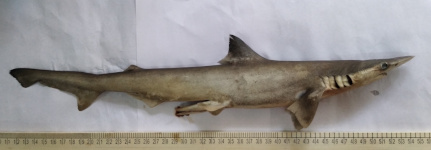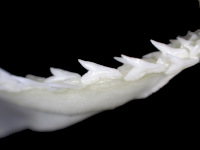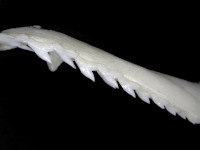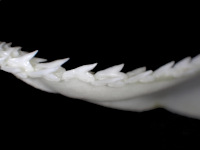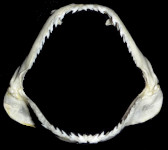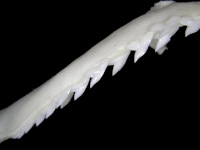Scoliodon laticaudus
Müller & Henle, 1838
Spadenose shark
Classification: Elasmobranchii Carcharhiniformes Carcharhinidae
Reference of the original description
Systematische Beschreibung der Plagiostomen. Berlin, Veit, pp. 1–200
Systematische Beschreibung der Plagiostomen. Berlin, Veit, pp. 1–200
Image of the original description
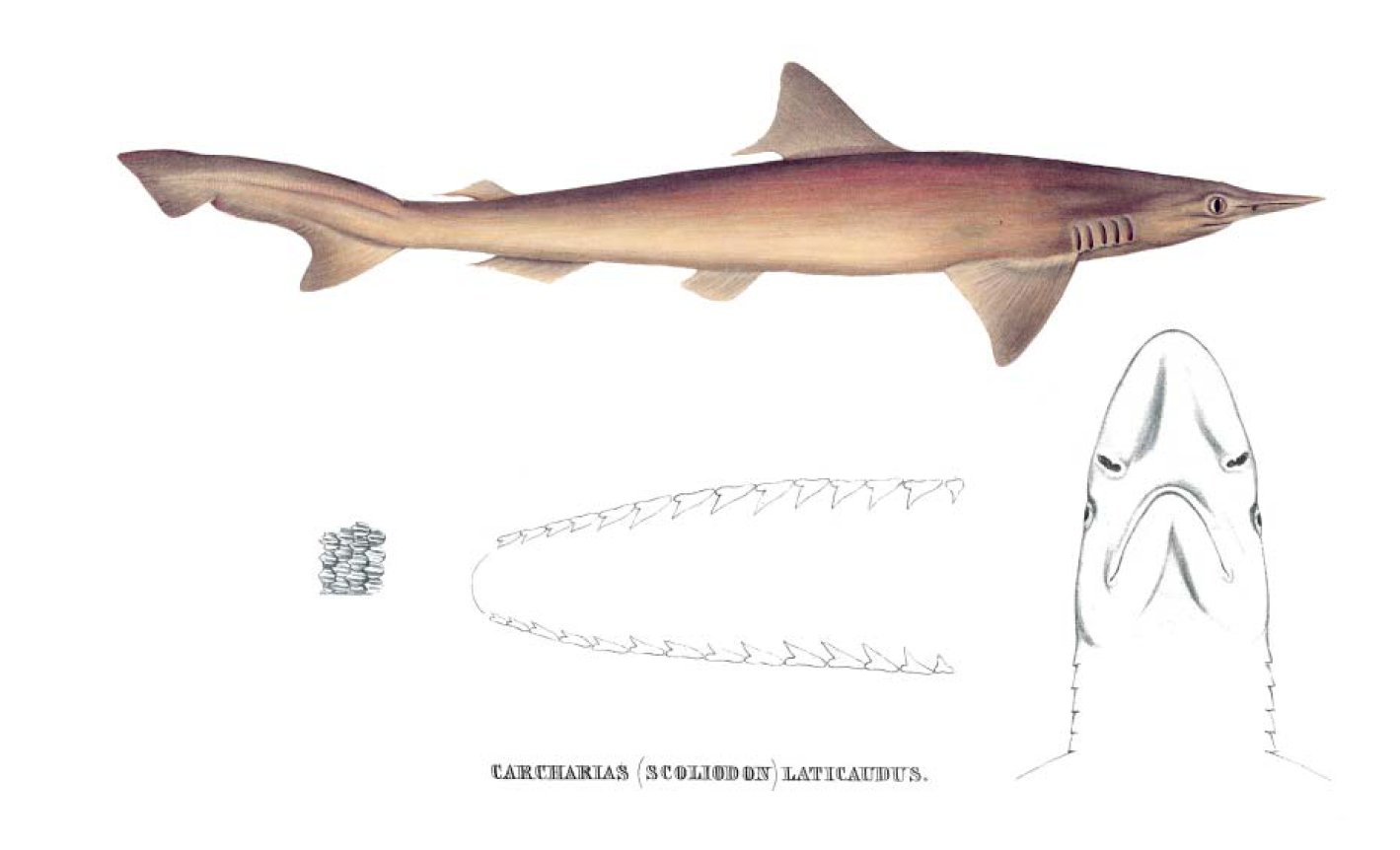
Scoliodon laticaudus Müller & Henle, 1838

Scoliodon laticaudus Müller & Henle, 1838
Synonyms / new combinations and misspellings
Carcharias laticauda, Carcharias laticaudus, Carcharias muelleri, Carcharias mülleri, Carcharias palasoora, Carcharias (Physodon) mülleri, Carcharias (Physodon) mulleri, Carcharias (Prionodon) palasorra, Carcharias (Scoliodon) laticaudus, Carcharias (Scoliodon) laticaudus, Physodon muelleri, Physodon mülleri, Physodon mulleri, Scoliodon cf. laticaudus, Scoliodon palasorrah, Squalus (Scoliodon) laticaudus, Squalus (Triglochis) mulleri
Carcharias laticauda, Carcharias laticaudus, Carcharias muelleri, Carcharias mülleri, Carcharias palasoora, Carcharias (Physodon) mülleri, Carcharias (Physodon) mulleri, Carcharias (Prionodon) palasorra, Carcharias (Scoliodon) laticaudus, Carcharias (Scoliodon) laticaudus, Physodon muelleri, Physodon mülleri, Physodon mulleri, Scoliodon cf. laticaudus, Scoliodon palasorrah, Squalus (Scoliodon) laticaudus, Squalus (Triglochis) mulleri
Types
Scoliodon laticaudus
Holotype: ZMB: 7830
Carcharias (Physodon) mülleri
Holotype: MNHN: 1041;
Carcharias (Prionodon) palasorra
XXXX: No types known;
Scoliodon laticaudus
Holotype: ZMB: 7830
Carcharias (Physodon) mülleri
Holotype: MNHN: 1041;
Carcharias (Prionodon) palasorra
XXXX: No types known;
Description :
Citation: Scoliodon laticaudus Müller & Henle, 1838: In: Database of modern sharks, rays and chimaeras, www.shark-references.com, World Wide Web electronic publication, Version 12/2025
Please send your images of "Scoliodon laticaudus" to info@shark-references.com
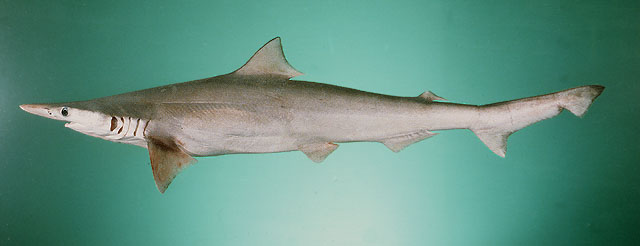
Scoliodon laticaudus Müller & Henle, 1838, © Randall, J.E, www.fish-base.org

Scoliodon laticaudus Müller & Henle, 1838, © Randall, J.E, www.fish-base.org
Common names
 Cazón espadachín,
Cazón espadachín,  Requin épée,
Requin épée,  Indian dog shark,
Indian dog shark,  Indian dogshark,
Indian dogshark,  Sharp nosed shark,
Sharp nosed shark,  Spadenose shark,
Spadenose shark,  Trowel nose shark,
Trowel nose shark,  Yellow dog shark,
Yellow dog shark,  Yellow dog-shark,
Yellow dog-shark,  Yellow dogshark,
Yellow dogshark,  Marracho espadarte
Marracho espadarte
 Cazón espadachín,
Cazón espadachín,  Requin épée,
Requin épée,  Indian dog shark,
Indian dog shark,  Indian dogshark,
Indian dogshark,  Sharp nosed shark,
Sharp nosed shark,  Spadenose shark,
Spadenose shark,  Trowel nose shark,
Trowel nose shark,  Yellow dog shark,
Yellow dog shark,  Yellow dog-shark,
Yellow dog-shark,  Yellow dogshark,
Yellow dogshark,  Marracho espadarte
Marracho espadarte
Short Description
Diagnosis after Compagno, 1984 [517]: Field Marks : A small, unmistakable requiem shark, with a very long, flat, laterally expanded, spadelike snout, small eyes, small, smooth-edged bladelike teeth with oblique cusps, distal blades, and no cusplets, a stocky compressed body, short, broad triangular pectoral fins, the first dorsal fin well rearward on the back with its rear tip about over the pelvic midbases, the second dorsal fin much smaller than the first and with its origin well behind the anal origin, the anal fin much larger than the second dorsal and with a straight posterior margin and a base without long preanal ridges, and a caudal fin with its postventral margin only moderately concave, not deeply notched. It is bronzy grey above, white below, without conspicuous markings.
Diagnostic Features: Body moderately stout. Head broad, greatly depressed, and trowel-shaped; snout parabolic or bell-shaped in dorsoventral view, very long, with preoral length greater than internarial space and mouth width; eyes small, without posterior notches; spiracles absent; no papillose gillrakers on internal gill openings; nostrils small, internarial space about 4 to 6 times nostril width; anterior nasal flaps very short, narrowly triangular, and not tubular; labial furrows very short to rudimentary, with uppers shorter than lowers and falling far behind eyes; teeth similar in upper and lower jaws, anteroposteriors with slender oblique cusps and distal blades but no cusplets or serrations; cusps of lower teeth not prominently protruding when mouth is closed; 25 to 33/24 to 34 rows of teeth. Interdorsal ridge absent or rudimentary; no dermal keels present on caudal peduncle; upper precaudal pit transverse and crescentic. First dorsal origin over or behind pectoral rear tips, its midbase much closer to pelvic bases than to pectorals and its free rear tip about over pelvic midbases; second dorsal fin much smaller than first, its height 1/3 of first dorsal height or less, its origin behind anal midbase; pectoral fins very broad and triangular, not falcate, pectoral length from origin to free rear tip about equal to pectoral anterior margin; pectoral origins under interspace between fourth and fifth gill slits; anal fin much larger than second dorsal, with short preanal ridges and a straight or slightly concave posterior margin. Colour light grey, yellowish or brownish grey above, without a colour pattern.
Diagnosis after Compagno, 1984 [517]: Field Marks : A small, unmistakable requiem shark, with a very long, flat, laterally expanded, spadelike snout, small eyes, small, smooth-edged bladelike teeth with oblique cusps, distal blades, and no cusplets, a stocky compressed body, short, broad triangular pectoral fins, the first dorsal fin well rearward on the back with its rear tip about over the pelvic midbases, the second dorsal fin much smaller than the first and with its origin well behind the anal origin, the anal fin much larger than the second dorsal and with a straight posterior margin and a base without long preanal ridges, and a caudal fin with its postventral margin only moderately concave, not deeply notched. It is bronzy grey above, white below, without conspicuous markings.
Diagnostic Features: Body moderately stout. Head broad, greatly depressed, and trowel-shaped; snout parabolic or bell-shaped in dorsoventral view, very long, with preoral length greater than internarial space and mouth width; eyes small, without posterior notches; spiracles absent; no papillose gillrakers on internal gill openings; nostrils small, internarial space about 4 to 6 times nostril width; anterior nasal flaps very short, narrowly triangular, and not tubular; labial furrows very short to rudimentary, with uppers shorter than lowers and falling far behind eyes; teeth similar in upper and lower jaws, anteroposteriors with slender oblique cusps and distal blades but no cusplets or serrations; cusps of lower teeth not prominently protruding when mouth is closed; 25 to 33/24 to 34 rows of teeth. Interdorsal ridge absent or rudimentary; no dermal keels present on caudal peduncle; upper precaudal pit transverse and crescentic. First dorsal origin over or behind pectoral rear tips, its midbase much closer to pelvic bases than to pectorals and its free rear tip about over pelvic midbases; second dorsal fin much smaller than first, its height 1/3 of first dorsal height or less, its origin behind anal midbase; pectoral fins very broad and triangular, not falcate, pectoral length from origin to free rear tip about equal to pectoral anterior margin; pectoral origins under interspace between fourth and fifth gill slits; anal fin much larger than second dorsal, with short preanal ridges and a straight or slightly concave posterior margin. Colour light grey, yellowish or brownish grey above, without a colour pattern.
Distribution
Indo-West Pacific: Somalia [20218], Tanzania, Mozambique (Ref. 5213), Pakistan to Java in Indonesia; then Japan, China, and Taiwan. Reported from Australia (Ref. 4959). Source: www.gbif.org
Indo-West Pacific: Somalia [20218], Tanzania, Mozambique (Ref. 5213), Pakistan to Java in Indonesia; then Japan, China, and Taiwan. Reported from Australia (Ref. 4959). Source: www.gbif.org
Human uses
fisheries: commercial; bait: usually
fisheries: commercial; bait: usually
Biology
Viviparous, with an unusual columnar placenta [517]. Maternal and foetal placenta comprises the entire placenta (Ref. 39556). Transplacental nutrient transfer may be hemotrophic (Ref. 39556). Litter size varies from 1 [2539] to 14 [544]. Size at birth about 13 to 15 cm TL [544]. Distinct pairing with embrace [17086].
Viviparous, with an unusual columnar placenta [517]. Maternal and foetal placenta comprises the entire placenta (Ref. 39556). Transplacental nutrient transfer may be hemotrophic (Ref. 39556). Litter size varies from 1 [2539] to 14 [544]. Size at birth about 13 to 15 cm TL [544]. Distinct pairing with embrace [17086].
Size / Weight / Age
100.0 cm TL (male/unsexed; (Ref. 5450)); max. reported age: 6 years [517]; males maturing at 24 to 36 cm and reaching 58 cm; adult females maturing at 33 to 35 cm and reaching at least 69 cm; size at birth 12 to 15 cm, averaging about 14 cm [517]
100.0 cm TL (male/unsexed; (Ref. 5450)); max. reported age: 6 years [517]; males maturing at 24 to 36 cm and reaching 58 cm; adult females maturing at 33 to 35 cm and reaching at least 69 cm; size at birth 12 to 15 cm, averaging about 14 cm [517]
Remarks
shark-references Species-ID=6258;
shark-references Species-ID=6258;
Parasites (arranged by Jürgen Pollerspöck)
Cestoda
Nematoda
Copepoda
Cestoda
- Heteronybelinia perideraeus (Shipley & Hornell, 1906) [17851]
- Hornelliella palasoorahi Zaidi & Khan, 1976 [16468]
- Nybelinia indica Chandra, 1986 [17851]
- Nybelinia lingualis (Cuvier, 1817) [17851]
- Nybelinia sp. [16112]
- Otobothrium carcharidis (Shipley & Hornell, 1906) [24083]
- Phyllobothrium visakhapatnamensis Gangadharam & Vijaya Lakshmi, 2004 [16224]
- Poecilancistrium caryophyllum (Diesing, 1850) Dollfus, 1929 [17851]
- Polypocephalus indicus Deshmukh, Jadhav & Shinde, 1982 [16301]
- Scyphophyllidium latipi (Caira & Durkin, 2006) [16105]
Nematoda
Copepoda
- Nesippus crypturus Heller, 1868 [16599]
- Nesippus orientalis Heller, 1868 [16583] [16599]
- Pandarus smithii Rathbun, 1886 [27172]
- Pseudopandarus gracilis Kirtisinghe, 1950 [16583] [16599] [25052]








_m%C3%BClleriMUELLER&HENLE,1839valid_as_Scoliodon_laticaudus.jpg)

